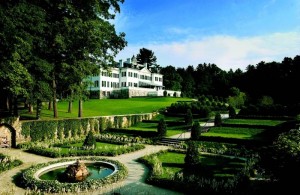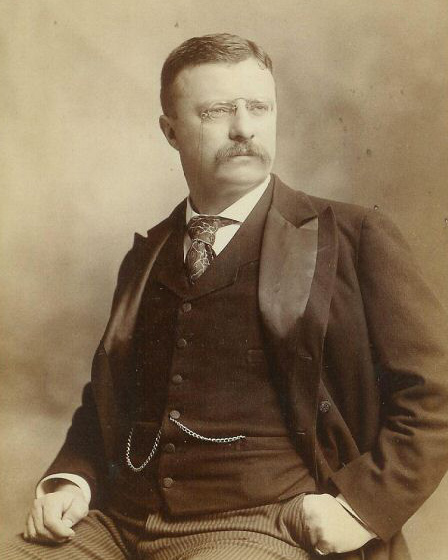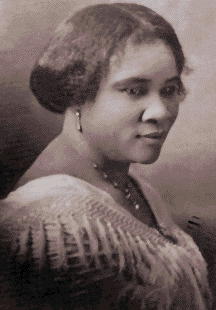
I don’t know about you, but I love the change from summer to autumn, when the temperature cools, the leaves change color, and there is something fresh and exciting in the air! For our Gilded Age counterparts, the change in season meant leaving Newport and preparing for the New York season, which was book-ended by the opening of the Metropolitan Opera season and Lent the following winter. During that brief lull between Newport and New York, many of the Four Hundred wedged in a visit to the countryside, with the Berkshires–Lenox, MA in particular–a fashionable destination. Though society in this beautiful area of New England was much staider than the flash and glamor of Newport, it was infinitely more “American” in its atmosphere, with large homes that harkened back to the Colonial days rather than the court of the Sun King, and entertainments held on an intimate scale. There were no prying tourists in the Berkshires, or tour guides interrupting their meals as in Newport, yet the area was also not super exclusive to the point of snobbishness like Tuxedo Park.
By the turn of the century, however, ultra-fashionable society had discovered the delights of the Berkshires, and though they brought their caviar dinners, Worth gowns, and European-style palaces, the tone never veered towards the ostentatious vulgarity that resulted in dog’s dinners. The principal events of the season in the Berkshires were the horse show and the Berkshire Hunt, and other events included gymkhanas, lawn tennis parties, archery competitions, strolls through the woods, deer stalking, and boating excursions. The end of the season was marked by the Tub Parade in September, where “a length procession of carriages, landaus, and coaches bedecked with flowers that were judged according to the elaboration of their decoration.
It was in the Berkshires that Edith Wharton built The Mount, which she considered her “first real home”, and it was with much regret that she was forced to give it up. While in residence, Edith managed to run afoul of the Berkshires’ leading hostess, Emily Vanderbilt Sloane, whose “cottage” Elm Court was the largest shingle-style house built in America, and with nearly one hundred rooms, was the second largest house in the Berkshires. Wharton, who drew many of her stories from fellow members of society, managed to hit a little too close to home with her short story The Line of Least Resistance, which was a thinly-veiled account of Emily’s ex-sister-in-law, who flaunted her extramarital relationship with Perry Belmont. As the queen of Berkshires’ society, everyone sided with Emily on the matter, and Edith was forced to apologize or risk being completely ostracized. The ladies made up with a luncheon, but no one was fooled.
In 1891, Emily’s supremacy in the Berkshires was challenged by one Anson Phelps Stokes, a self-made multimillionaire and avowed Anglophile, who decided to build a larger “cottage” than Elm Court. This was Shadow Brook, which by its completion in 1894, cost $1 million, and with more than one hundred rooms, was the largest private home in America. Its ground floor covered an entire acre, and apocryphal stories about its capacity for entertainments abounded. In one story, Helen Phelps Stokes would tell her children to ride their bicycles in the attic on rainy days, and in another, Anson Phelps Stokes Jr. wired his mother to inform her he was bringing “a crowd of 96 men” (meaning, those from his graduating class at Harvard). Mrs. Stokes allegedly wired back “don’t make it more than fifty; have friends already here.”
Though the season was short, the Berkshires were a source of restoration and inspiration to more than just socialites, and judging by how much Edith Wharton loved the area, its awe-inspiring vistas fed the mind of the artist. Many of the “cottages” remain in existence, though as hotels or convention centers, but you can still walk in the path of Edith Wharton and her ilk (as well as the path of W.E.B. DuBois, whose family had very strong roots in Great Barrington).
Further Reading:
The Berkshire Cottages: A Vanishing Era by Carole Owens
Houses of the Berkshires, 1870-1930 by Richard S. Jackson & Cornelia Brooke Glider
Edith Wharton at Home: Life at the Mount by Richard Guy Wilson
A Season of Splendor: The Court of Mrs. Astor in Gilded Age New York by Greg King
The Berkshire Web
Ventfort Hall
A Look at Bellefontaine





The September issue of American Vogue has a spread shot at The Mount with writers and actors. I think you would love it.
@Mageela: I do love it! I was excited to get my September issue in the mail just for this shoot!
If I had an estate in the Berkshires, I might like Fall *a little* better. 😉
@heidenkind: LOL
Thank you for the lovely mention and the link to our website. If you are planning a trip up to the Berkshires this fall, be sure to check out our Calendar of Events. There are also tours of the house and gardens through october 31.